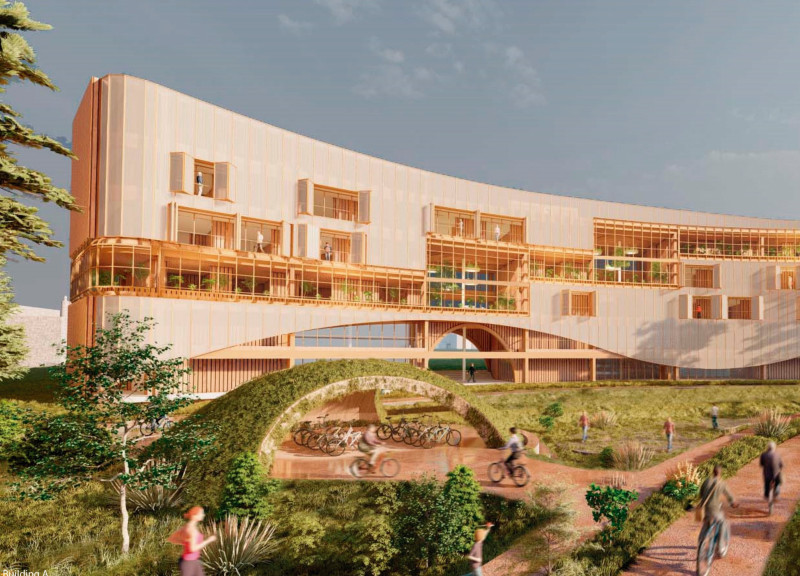5 key facts about this project
### Overview
Located in Finland at the University of Helsinki, the GOAHTI Greenhouse is a multifunctional student complex designed to integrate architectural innovation with sustainability. The project aims to create a harmonious relationship between educational facilities and communal spaces while fostering connections with the natural environment. The design philosophy emphasizes the interplay of light, air, and landscape, leveraging organic forms that resonate with the site's topography.
### Spatial Configuration and User Engagement
The architectural layout is characterized by a fluid, linear design that reflects the natural contours of the landscape. The exterior incorporates gently undulating curves, moving away from traditional geometries to create varied spatial experiences that enhance social interaction. An intentional entry sequence directs residents through communal and private areas, promoting accessibility and interaction with the surrounding greenery. Large windows are strategically placed to provide expansive views and optimize natural lighting throughout the interior, contributing to a welcoming atmosphere.
### Sustainable Design Elements
Materiality plays a crucial role in the project, featuring significant use of timber that not only enhances the aesthetic quality but also supports structural sustainability. Extensive glazing facilitates daylighting while minimizing reliance on artificial light sources. Green roofs contribute to the building's insulation and support local biodiversity.
Sustainable practices are embedded in the design with the incorporation of solar panels for renewable energy generation, rainwater harvesting systems to reduce the ecological footprint, and natural ventilation strategies that ensure a continuous flow of fresh air. Community spaces, including gardens and flexible work areas, are prioritized to encourage relaxation, collaboration, and overall well-being among residents.
The building's dynamic façade adapts to changing weather conditions, optimizing energy efficiency while encouraging a cohesive community atmosphere through its thoughtful design.



















































